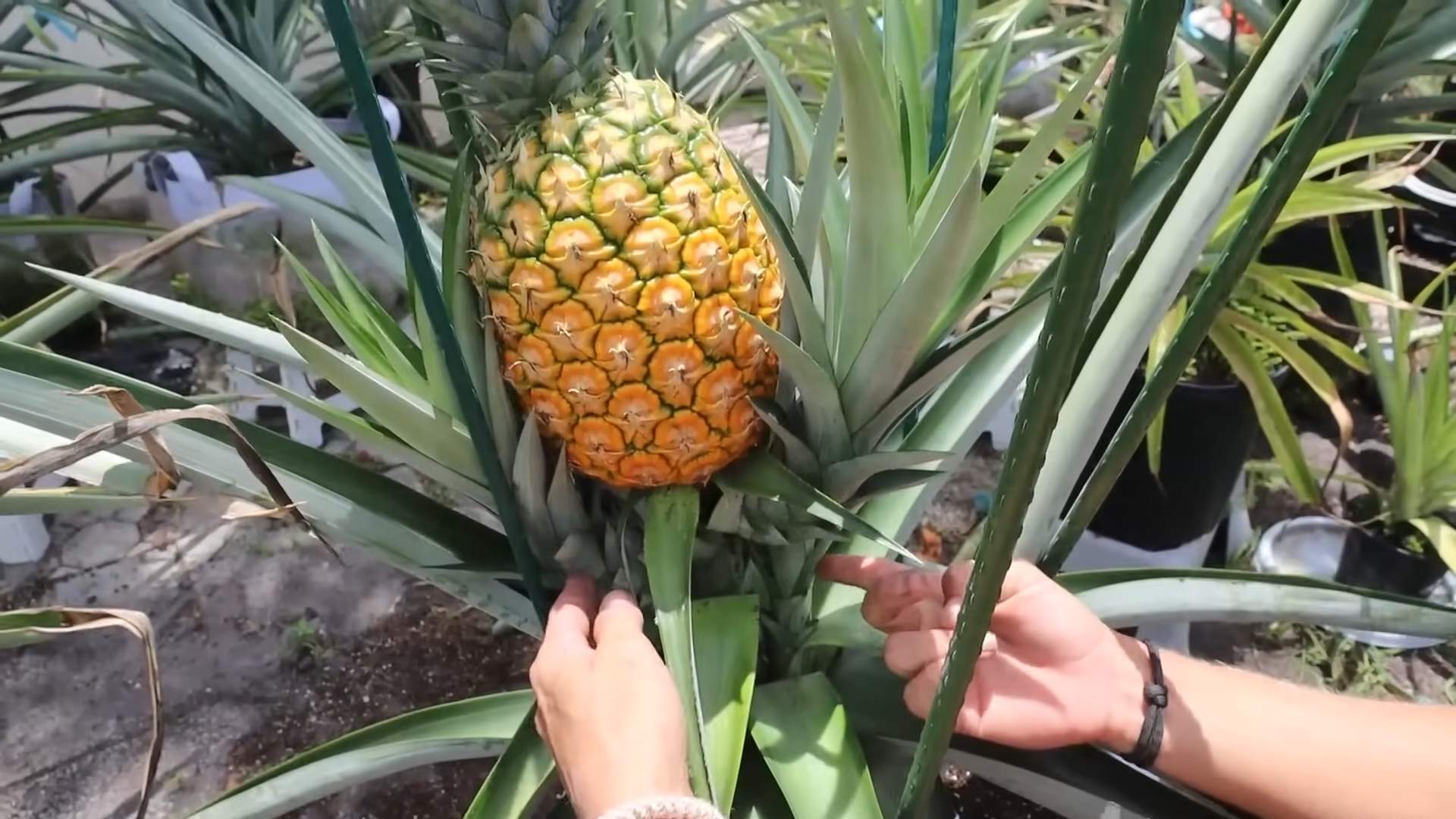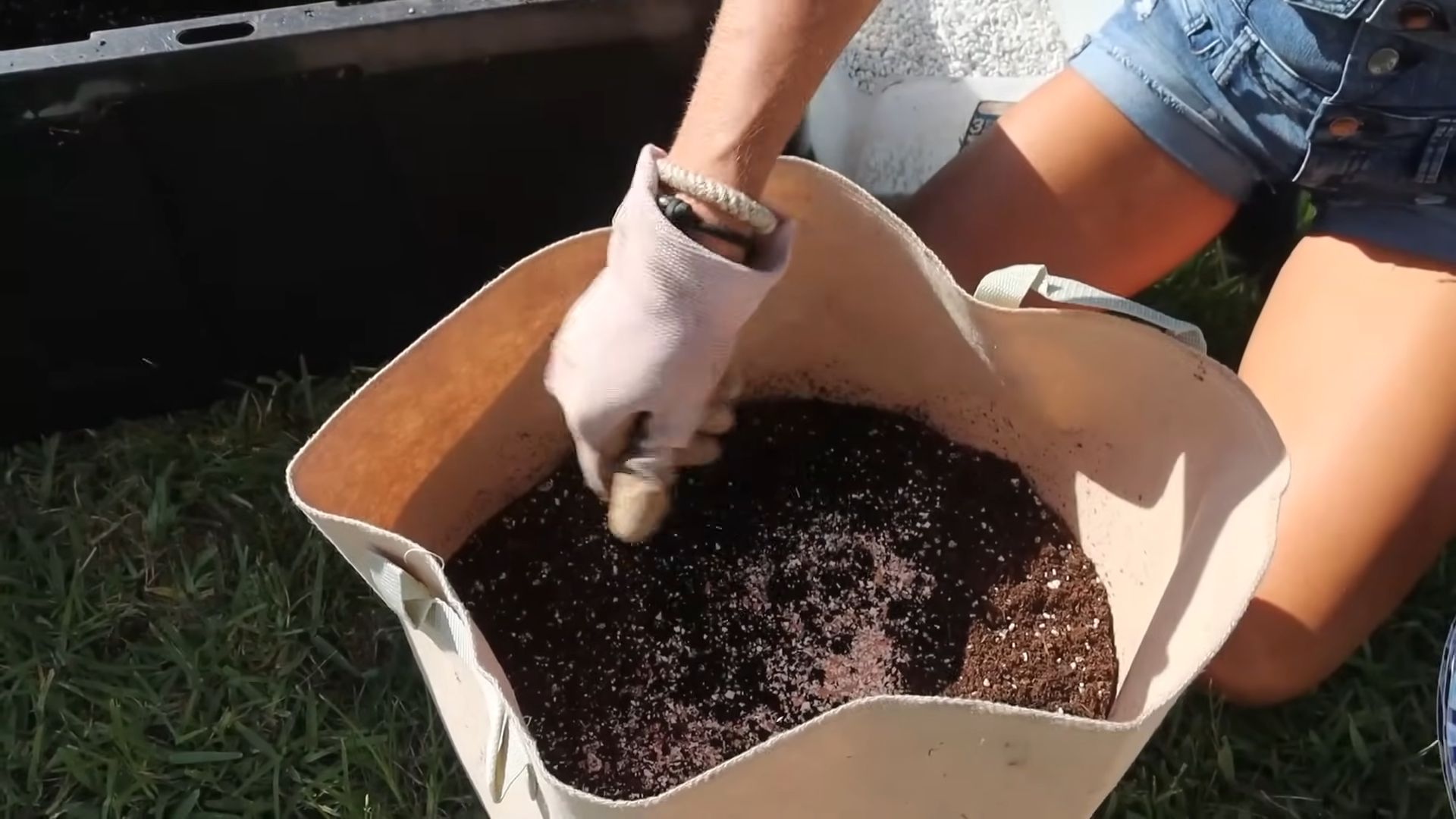Grow Giant Pineapples at Home? Absolutely! Imagine plucking a juicy, sun-ripened pineapple, bursting with tropical flavor, straight from your own backyard. Sounds like a dream, right? Well, it doesn’t have to be! This DIY guide will unlock the secrets to cultivating these exotic fruits, even if you think you don’t have a green thumb.
For centuries, pineapples have been a symbol of hospitality and luxury. Originating in South America, they were once so prized in Europe that they were rented out as status symbols for dinner parties! Now, you can bring that touch of tropical elegance to your own home, and you don’t need a sprawling plantation to do it.
Why should you try this DIY trick? Because store-bought pineapples, while delicious, often lack the intense flavor and sweetness of a homegrown fruit. Plus, knowing you nurtured something so incredible from start to finish is incredibly rewarding. I’m going to show you simple, step-by-step instructions, using readily available materials, to help you grow giant pineapples at home. Get ready to impress your friends and family with your newfound gardening prowess and enjoy the sweetest, most flavorful pineapples you’ve ever tasted!

Grow Giant Pineapples at Home: A DIY Guide
Okay, pineapple lovers, listen up! I’m going to let you in on a little secret: you can grow your own giant pineapples right at home. Forget those tiny, expensive ones from the grocery store. We’re talking juicy, sweet, and impressively large pineapples that you grew yourself. It’s easier than you think, and I’m here to guide you through every step.
What You’ll Need
Before we dive in, let’s gather our supplies. This is crucial for a smooth and successful pineapple-growing adventure.
* A Healthy Pineapple Top: This is the most important ingredient! Choose a ripe pineapple from the store. Look for one with healthy, green leaves and no signs of rot.
* A Sharp Knife: For removing the pineapple top.
* Potting Soil: A well-draining potting mix is essential. I recommend a mix specifically formulated for tropical plants.
* A Pot: Start with a pot that’s at least 6 inches in diameter. You’ll likely need to repot later as your pineapple grows.
* Water: For watering your pineapple.
* Rooting Hormone (Optional): This can help speed up the rooting process, but it’s not strictly necessary.
* Gloves (Optional): Pineapple leaves can be a bit prickly.
* Spray Bottle: For misting the leaves.
* Well-Draining Location with Plenty of Sunlight: Pineapples love sunshine!
* Patience: Growing pineapples takes time, so be prepared to wait.
Preparing the Pineapple Top
This is where the magic begins! We need to prepare the pineapple top so it can root and start growing.
1. Twist or Cut Off the Top: Hold the pineapple firmly and twist the top off. If it doesn’t twist easily, use your sharp knife to carefully cut it off, leaving about an inch of fruit attached.
2. Remove the Excess Fruit: Carefully remove any remaining fruit from the base of the top. This is important because the fruit can rot and attract pests. I usually use my knife to gently scrape it away. Be careful not to damage the base where the roots will emerge.
3. Peel Back the Lower Leaves: Peel back a few layers of the lower leaves to expose the stem. This will encourage root growth. You should aim to expose about an inch or two of the stem.
4. Let it Dry: This is a crucial step to prevent rot. Place the pineapple top in a dry, well-ventilated area for 3-7 days. This allows the cut end to callous over, which helps prevent fungal infections. I usually put mine on a paper towel in a sunny spot.
Rooting the Pineapple Top
Now that our pineapple top is prepped, it’s time to encourage those roots to grow! There are two main methods you can use: water rooting and direct planting. I’ll explain both.
Water Rooting Method
This method allows you to see the roots as they develop, which can be very satisfying.
1. Place in Water: Fill a glass or jar with water. Make sure the water only covers the base of the stem, not the leaves. You can use toothpicks inserted into the sides of the pineapple top to suspend it over the water if needed.
2. Change the Water Regularly: Change the water every 2-3 days to keep it fresh and prevent algae growth.
3. Wait for Roots: Be patient! It can take several weeks for roots to appear. Once the roots are about 2-3 inches long, you can plant the pineapple top in soil.
Direct Planting Method
This method involves planting the pineapple top directly into soil. It’s a bit less hands-on than water rooting.
1. Prepare the Pot: Fill your pot with well-draining potting mix.
2. Plant the Pineapple Top: Make a hole in the center of the soil and plant the pineapple top, burying the exposed stem.
3. Water Thoroughly: Water the soil thoroughly after planting.
Planting and Caring for Your Pineapple
Whether you rooted your pineapple top in water or planted it directly, the next steps are the same.
1. Choose the Right Location: Pineapples need plenty of sunlight, at least 6 hours a day. A south-facing window or a sunny spot in your garden is ideal.
2. Watering: Water your pineapple regularly, but don’t overwater. Allow the soil to dry out slightly between waterings. I usually water mine about once a week, but this will depend on your climate and the humidity.
3. Fertilizing: Feed your pineapple with a balanced fertilizer every 2-3 months during the growing season (spring and summer). Follow the instructions on the fertilizer packaging.
4. Temperature: Pineapples thrive in warm temperatures, ideally between 65°F and 85°F (18°C and 29°C). Protect your pineapple from frost. If you live in a cold climate, you may need to bring it indoors during the winter.
5. Misting: Pineapples appreciate humidity. Mist the leaves regularly with a spray bottle, especially during dry weather.
6. Repotting: As your pineapple grows, you’ll need to repot it into a larger container. Choose a pot that’s a few inches larger than the current one.
Encouraging Fruiting
This is the part we’ve all been waiting for! Getting your pineapple to fruit can take some time, but there are a few things you can do to encourage it.
1. Patience is Key: It can take 1-3 years for a pineapple plant to produce fruit. Don’t get discouraged if you don’t see a pineapple right away.
2. Ethephon Treatment (Optional): This is a chemical treatment that can induce flowering. However, it’s not always necessary and can be tricky to use. I recommend trying other methods first.
3. Apple Trick: Place a ripe apple near the base of the pineapple plant and cover it with a plastic bag. The ethylene gas released by the apple can stimulate flowering. Leave the apple in place for a week, then remove it.
4. Magnesium Sulfate (Epsom Salts): Some gardeners swear by Epsom salts to encourage fruiting. Dissolve 1 tablespoon of Epsom salts in a gallon of water and water your pineapple plant with the solution.
Harvesting Your Pineapple
Once your pineapple starts to ripen, it’s time to prepare for the harvest!
1. Watch for Color Change: The pineapple will start to turn from green to yellow or golden.
2. Check for Fragrance: A ripe pineapple will have a sweet, fragrant aroma.
3. Gently Tug: Gently tug on the pineapple. If it’s ripe, it should come off easily. If it doesn’t, it’s not quite ready yet.
4. Cut it Off: If the pineapple is ripe but doesn’t come off easily, use a sharp knife to cut it off.
Enjoy Your Homegrown Pineapple!
Congratulations! You’ve successfully grown your own giant pineapple. Now it’s time to enjoy the fruits (literally!) of your labor. Slice it up, grill it, add it to smoothies, or just eat it straight from the core. The possibilities are endless!
Troubleshooting
Even with the best care, you might encounter some problems along the way. Here are a few common issues and how to address them:
* Rotting: If your pineapple top starts to rot, it’s likely due to overwatering or poor drainage. Make sure your soil is well-draining and avoid overwatering. If the rot is severe, you may need to start over with a new pineapple top.
* Yellowing Leaves: Yellowing leaves can be a sign of nutrient deficiency. Try fertilizing your pineapple plant with a balanced fertilizer.
* Pests: Pineapples can be susceptible to pests like mealybugs and scale. Inspect your plant regularly and treat any infestations promptly. You can use insecticidal soap or neem oil to control pests.
* No Fruit: If your pineapple plant isn’t fruiting, it may need more sunlight or fertilizer. Try the apple trick or Epsom salts to encourage fruiting. Remember, patience is key!
Tips for Success
Here are a few extra tips to help you grow the biggest, juiciest pineapples possible:
* Choose a Good Pineapple: Start with a healthy, ripe pineapple from the store.
* Use Well-Draining Soil: This is crucial for preventing rot.
* Provide Plenty of Sunlight: Pineapples need at least 6 hours of sunlight a day.
* Don’t Overwater: Allow the soil to dry out slightly between waterings.
* Fertilize Regularly: Feed your pineapple plant with a

Conclusion
So, there you have it! Growing giant pineapples at home isn’t just a pipe dream; it’s an achievable reality with a little patience, the right techniques, and a whole lot of sunshine. We’ve walked you through the process, from selecting the perfect pineapple top to nurturing your plant to its full, glorious potential. But why should you embark on this tropical adventure?
First and foremost, the satisfaction of harvesting a pineapple you’ve personally nurtured from a humble top is unparalleled. Imagine the look on your friends’ and family’s faces when you present them with a juicy, homegrown giant pineapple! It’s a conversation starter, a testament to your green thumb, and a delicious reward all rolled into one.
Beyond the bragging rights, growing your own pineapples offers a superior flavor experience. Commercially grown pineapples are often harvested before they’re fully ripe to withstand the rigors of shipping and storage. This can result in a less intense, less sweet flavor. When you grow your own, you can let it ripen fully on the plant, resulting in a burst of tropical sweetness that store-bought pineapples simply can’t match. Plus, you know exactly what went into growing it – no mystery chemicals or questionable practices.
But the benefits don’t stop there. Growing pineapples is also an incredibly rewarding gardening project. It’s a relatively low-maintenance plant, making it perfect for beginner gardeners. It’s also a great way to teach children about the life cycle of plants and the importance of sustainable food practices. And let’s not forget the aesthetic appeal! A pineapple plant adds a touch of the tropics to any garden or indoor space.
Ready to take your pineapple growing to the next level? Consider experimenting with different varieties of pineapples. While the Smooth Cayenne is a popular choice, there are other varieties like the Red Spanish and the Sugarloaf that offer unique flavors and characteristics. You can also try different growing mediums, such as coco coir or perlite, to see which works best for your climate and growing conditions.
Another variation to consider is hydroponic pineapple growing. This method involves growing the pineapple in a nutrient-rich water solution without soil. It can be a great option for those with limited space or poor soil conditions.
Don’t be afraid to experiment with different fertilizers and feeding schedules. Pineapples are heavy feeders, so providing them with the right nutrients is crucial for optimal growth and fruit production. Look for fertilizers specifically formulated for tropical fruits or bromeliads.
Finally, remember that patience is key. Growing a giant pineapple takes time, so don’t get discouraged if you don’t see results immediately. With proper care and attention, you’ll be rewarded with a delicious and impressive fruit that you can be proud of.
We encourage you to give this DIY trick a try. It’s a fun, rewarding, and delicious way to connect with nature and enjoy the fruits (literally!) of your labor. And most importantly, we want to hear about your experience! Share your photos, tips, and stories with us in the comments below. Let’s create a community of pineapple enthusiasts and inspire others to grow their own giant pineapples at home. Let’s all learn how to **grow giant pineapples** together!
Frequently Asked Questions (FAQ)
How long does it really take to grow a giant pineapple from a top?
Patience is paramount! From planting the top to harvesting a mature pineapple, you’re looking at a timeframe of approximately 2 to 3 years. The exact duration depends on several factors, including the variety of pineapple, your climate, and the care you provide. Warmer climates generally lead to faster growth. Don’t be disheartened by the wait; the reward of a homegrown pineapple is well worth the time investment. Remember to consistently monitor your plant for signs of growth and adjust your care routine as needed.
What kind of soil is best for growing pineapples?
Pineapples thrive in well-draining, slightly acidic soil. A sandy loam is ideal, as it allows for good aeration and prevents waterlogging, which can lead to root rot. If your garden soil is heavy clay, amend it with plenty of organic matter, such as compost, peat moss, or aged manure, to improve drainage and fertility. You can also grow pineapples in raised beds or containers filled with a commercial potting mix specifically formulated for tropical plants. The key is to ensure that the soil is well-draining and provides the necessary nutrients for healthy growth.
How often should I water my pineapple plant?
Watering frequency depends on your climate and the growing conditions. In general, water your pineapple plant thoroughly when the top inch of soil feels dry to the touch. During hot, dry weather, you may need to water more frequently. Avoid overwatering, as this can lead to root rot. Pineapples are relatively drought-tolerant, so it’s better to err on the side of underwatering than overwatering. During the winter months, reduce watering frequency as the plant’s growth slows down. Always check the soil moisture before watering to ensure that your plant is getting the right amount of hydration.
What kind of fertilizer should I use for my pineapple plant?
Pineapples are heavy feeders and require regular fertilization to thrive. Use a balanced fertilizer with a ratio of 10-10-10 or 14-14-14, or a fertilizer specifically formulated for tropical fruits or bromeliads. Apply the fertilizer according to the manufacturer’s instructions, typically every 2-3 months during the growing season (spring and summer). You can also supplement with foliar feeding, spraying the leaves with a diluted fertilizer solution. Avoid over-fertilizing, as this can burn the roots and damage the plant. Organic options like compost tea or fish emulsion can also be used to provide essential nutrients.
How do I encourage my pineapple plant to fruit?
Getting your pineapple plant to fruit can sometimes be a challenge. One common trick is to expose the plant to ethylene gas, which stimulates flowering. You can do this by placing a ripe apple or banana near the plant, covering it with a plastic bag for a few days. The ripening fruit will release ethylene gas, which should trigger flowering. Another method is to pour a small amount of calcium carbide solution (dissolve a teaspoon of calcium carbide in a gallon of water) into the center of the plant. This will also release ethylene gas. Be careful when handling calcium carbide, as it can be irritating to the skin and eyes. Ensure the plant is mature enough (at least 2-3 years old) and has received adequate sunlight, water, and nutrients before attempting to induce flowering.
My pineapple plant has brown tips on the leaves. What’s wrong?
Brown tips on pineapple leaves can be caused by several factors, including underwatering, overwatering, excessive fertilization, or salt buildup in the soil. Check the soil moisture to ensure that you’re watering correctly. If the soil is consistently dry, increase watering frequency. If the soil is waterlogged, improve drainage. Reduce fertilization if you suspect over-fertilization. Flush the soil with plenty of water to remove salt buildup. Brown tips can also be caused by low humidity, especially in indoor environments. Increase humidity by misting the plant regularly or placing it on a tray filled with water and pebbles.
Can I grow pineapples indoors?
Yes, you can grow pineapples indoors, but it requires providing the right conditions. Pineapples need at least 6-8 hours of direct sunlight per day, so place your plant near a sunny window or supplement with grow lights. Maintain a warm temperature (65-80°F) and high humidity. Water regularly, allowing the soil to dry slightly between waterings. Fertilize every 2-3 months during the growing season. Choose a pot that is large enough to accommodate the plant’s root system and ensure that it has good drainage. Indoor-grown pineapples may take longer to fruit than those grown outdoors, but with proper care, you can still enjoy the satisfaction of harvesting your own homegrown pineapple.
What pests and diseases affect pineapple plants?
Pineapples are relatively pest-resistant, but they can be susceptible to certain pests and diseases. Mealybugs, scale insects, and spider mites can sometimes infest pineapple plants. Treat infestations with insecticidal soap or neem oil. Root rot is a common disease that can occur in poorly drained soil. Prevent root rot by ensuring that your pineapple plant is planted in well-draining soil and avoid overwatering. Heart rot, caused by the fungus Phytophthora, can also affect pineapples. Prevent heart rot by ensuring good air circulation and avoiding overhead watering. Regularly inspect your plant for signs of pests and diseases and take action promptly to prevent them from spreading.





Leave a Comment